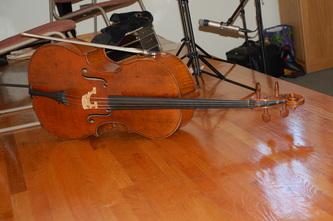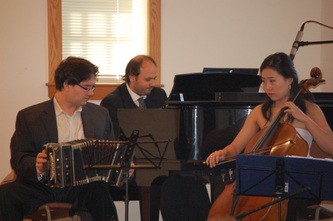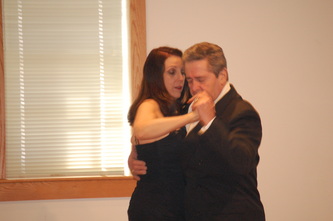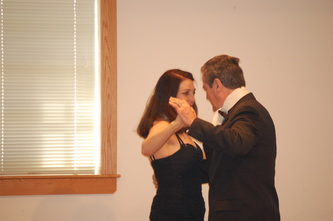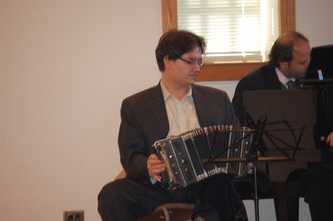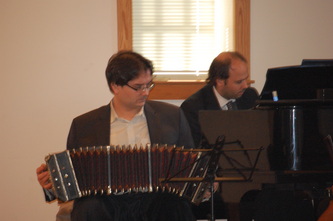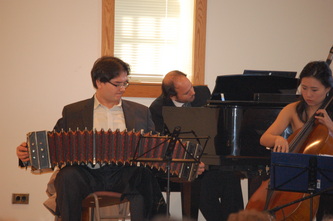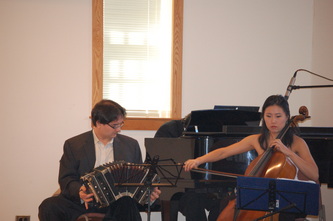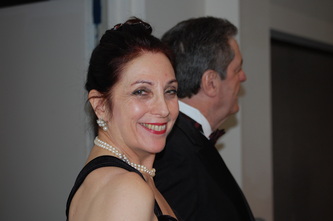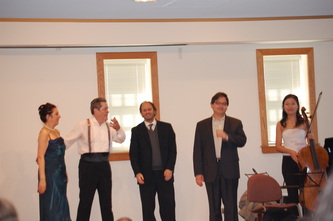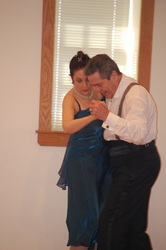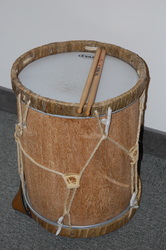THE ARGENTINE TANGO / TANGO ARGENTINO
PROGRAM NOTES
|
Río de la Plata – Argentina and Uruguay
The Río de la Plata (“Silver River”), forms part of the border between the two South American nations of Argentina and Uruguay. These two nations differ from their South American neighbors in that they are perhaps the most European in racial/ethnic makeup. However, they not only boast musics with strong Iberian characteristics (murga, vals criollo, canción), but also musics with indigenous influences (chacarera, baguala, carnavalito), and African influences (candombe, tango, milonga). The tango is the best known of the musical genres derived from this region, yet its origins are not without controversy. However, it is generally accepted that the tango originated in the Río de la Plata region during the late 1800s, and many attribute its origins to the black populations which existed along the river. Whatever the exact roots of the tango, it is clear that various groups of people, on both sides of the Río de la Plata, contributed to the development of this music. Early instrumentation of the tango often included some combination of guitar or harp, flute, and violin. Later ensembles included a wider variety of instruments such as the clarinet, piano, and, most importantly, the bandoneon, a type of button accordion that has become the most emblematic instrument of the tango. In addition, various subgenres developed within the tango, including sung tangos (tango canción or tango característico) and instrumental tangos (tango romanza, milonga). Although the tango reached its peak in the 1940s, during the 1950s a new type of tango began to emerge, headed by the Argentine Astor Piazzolla. It has been suggested that the association of tango with Argentina, as opposed to Uruguay, is partly due to the rapid development of music publishing and recording in the former. As a result, key tango artists from Uruguay, such as Gerardo Mattos Rodriguez (author of the famous tango “La cumparsita”), migrated to Argentina, Europe, and the United States to foster their careers. As tango made its way around the world, New York City played host to such acclaimed artists as Astor Piazzolla and singer Carlos Gardel. In 1983, the successful premier of the musical Tango Argentino in Paris helped spark a major tango revival. Tango Argentino received considerable international attention, enjoying a run on Broadway in New York City, followed by a world tour that would span nearly two decades. Tango is very much a part of the New York City soundscape today; while tango continues to be performed in theaters and cabarets throughout the city, numerous restaurants, clubs, and dance studios regularly host tango socials known as milongas. Tango music and dance will undoubtedly continue to garner interest, ignite passion, and touch all those who are privileged to hear it. |
Río de la Plata – Argentina and Uruguay
El Río de la Plata es parte de la frontera entre dos países sudamericanos -- Argentina y Uruguay. Estos dos países se diferencian de sus vecinos sudamericanos en que son tal vez de los países sudamericanos, los más europeos en sus características étnicas y raciales. Sin embargo, los dos países se enorgullecen no solamente de sus músicas con características fuertes de la península Ibérica (murga, vals criollo, canción), sino también de sus músicas con fuertes influencias indígenas (chacarera, baguala, carnavalito), e influencias Africanas (candombe, tango, milonga). El tango es el más conocido de los géneros musicales derivados de esta región, pero sus raíces despiertan controversia. Sin embargo, es generalmente aceptado que el tango nació en la región del Río de la Plata durante los 1800s, y muchos atribuyen sus raíces a la población negra que existió cerca del río. Cualquiera que sean las raíces exactas del tango, no existe duda de que varios grupos étnicos, a ambos lados del río, han contribuido al desarrollo de esta música. Las primeras instrumentaciones del tango frecuentemente incluían alguna combinación de arpa o guitarra, flauta, y violín. Los conjuntos más recientes han incluido una mayor variedad de instrumentos como el clarinete, piano, y el bandoneón (un tipo de acordeón con botones que es el instrumento mas emblemático del tango). Del tango se desarrollaron varios subgéneros que incluyen tangos cantados (tango canción o tango característico) y tangos instrumentales (tango romanza, milonga). A pesar de que durante los 1940s el tango ya había alcanzado su apogeo, durante los 1950s un nuevo tipo de tango, dirigido por Astor Piazolla, empezó a emerger. Algunos investigadores afirman que la asociación del tango con Argentina, en vez de con Uruguay, es el resultado del desarrollo de las industrias de publicación y grabación de la música que se desarrollaron en Argentina. Es ésta la razón por la cual importantes compositores del tango, como el uruguayo Gerardo Mattos Rodríguez (autor del tango famoso, “La cumparsita”), emigraron a Argentina, Europa, y a los Estados Unidos para impulsar sus carreras. En 1983, el éxitoso espectáculo Tango Argentino en París tuvo un papel significativo en el resurgimiento del tango. Tango Argentino recibió atención internacional considerable; el show llegó a Broadway en Nueva York, y a numerosos países durante un periodo de casi dos décadas. El tango sigue siendo una parte del sonido musical de Nueva York y es ejecutado en milongas (lugares donde se baila tango socialmente), teatros, y cabarets por toda la ciudad. Sin duda, el tango va a continuar generando interés y emocionando a todos que tengan el privilegio de escucharlo. |
|
|
|
